More Ducks for Your Dollars
Ducks Unlimited is using cutting-edge science and proven business strategies to provide a high return on your conservation investments
Ducks Unlimited is using cutting-edge science and proven business strategies to provide a high return on your conservation investments
By Tom Moorman, Ph.D.
Science has always been at the heart of Ducks Unlimited's mission. Since our founding in 1937, DU has used the best available science to plan and conduct conservation work across North America. These efforts took a big step forward in 1986, when DU and the rest of the waterfowl management community came together to create the North American Waterfowl Management Plan (NAWMP), an international, science-based plan designed to benefit waterfowl and their habitats.
Today, Ducks Unlimited Inc., Ducks Unlimited Canada, and Ducks Unlimited de Mxico have their own guiding document, which we call the International Conservation Plan (ICP). Informed by NAWMP and other sources, the ICP is the foundation on which all three DU organizations base our operations. Think of this as a step-down process in which we use scientific data and other information at increasingly finer geographic scales to ensure that resources are focused on the most crucial landscapes. It is a complicated but exceedingly important effort that we periodically revise to fine-tune our conservation delivery.
Changes and updates to NAWMP in 2012 and 2018 included new information about waterfowl and their habitats and a new focus on the important social components of wetlands and waterfowl conservation. Consequently, the three DU organizations recently collaborated on a revision of the ICP. In keeping with our critical connection to NAWMP, the revision focused on two critical elements: science and people. Here's how both of them are steering DU's current conservation planning.
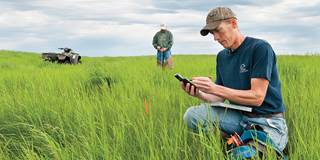
Photo DAVIDSTIMAC.COM
Previous iterations of Ducks Unlimited's ICP relied solely on waterfowl and wetland science to guide our conservation mission. However, DU's work is essentially a business, and the product we produce is habitat. While past research has provided solid guidance on how and where to deliver our habitat work, the relative costs of working on different landscapes in different parts of the continent were not considered until recently. In developing our most recent version of the ICP, scientists from the three DU organizations used biological as well as financial data to develop a return-on-investment model for analyzing potential habitat work. This model is a new and innovative planning tool in our conservation toolbox.
While it is common to use return-on-investment calculations in the context of business performance, this tool has not been commonly used by conservation organizations. Now we can use science-based population and habitat metrics along with measures of relative cost to determine which investments are likely to produce the most benefits. To put it plainly, this new tool helps us get the most ducks for our dollars.
This first-generation model helps us decide how to allocate limited resources and answer questions from supporters who want to know where their contributions can achieve the most benefit per dollar invested. On the surface that may seem like a simple question. In reality, there remains a great deal of ecological variability, business uncertainty, and imperfect knowledge and understanding of the natural systems that produce waterfowl.
To construct this new return-on-investment model, we used three biological and landscape variables: waterfowl abundance, habitat capacity, and habitat threats. We also factored in a financial variable that accounted for the cost of conserving habitat on each specific landscape.
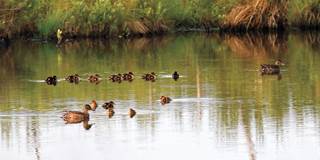
Photo MICHAELFURTMAN.COM
Estimates of waterfowl abundance required the application of sophisticated geospatial statistical analysis techniques. We estimated breeding waterfowl numbers using the US Fish and Wildlife Service's (USFWS) Waterfowl Breeding Population and Habitat Survey data from 2001 to 2015. For population estimates on migration and wintering habitat landscapes, we used USFWS county-level harvest data and NAWMP population objective data.
For each identified waterfowl conservation landscape across North America, we estimated habitat capacity as either "insufficient" or "sufficient" based on NAWMP Joint Venture waterfowl habitat objectives.
We identified habitat threats within each identified landscape based on the most recent estimates of net wetland gain or loss. Landscapes with current rates of loss exceeding one percent per year were designated as "high threat." Those with an annual rate of loss of less than one percent were designated as "moderate threat." And those that either gained or had stable amounts of habitat were designated "low threat."
For each landscape, we assigned numerical values for habitat loss and habitat capacity and entered those into the return-on-investment model. Then we applied a weighting factor to each landscape to reflect whether it was a breeding or migration/wintering landscape. This weighting reflects our understanding of waterfowl population ecology, which tells us that, in general, among the species for which assessments have been completed, approximately 70 percent of the annual variation in waterfowl populations is driven by events that happen on the breeding grounds. Factors like nest success, hen success, and duckling survival, which all occur on breeding areas, disproportionately affect waterfowl population dynamics relative to survival rates during migration and winter.
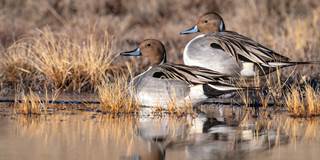
Photo DAVIDSTIMAC.COM
This effort provided a scientific foundation for refining our conservation funding models to focus investment on priority waterfowl breeding habitats while using a more leveraged approach to fund work in important migration and wintering habitats. Outcomes from this work strongly reinforced the need for increased conservation investments on the breeding grounds, especially in the Prairie Pothole Region of the United States and Canada. This region contributes the most to waterfowl production but faces significant conservation challenges. The prairies continue to experience high rates of habitat loss yet have relatively low costs for delivering conservation. Our model indicates that the Prairie Pothole Region is where DU can achieve the greatest return per dollar invested. However, model results also indicate that other breeding areas, including the Western Boreal Forest and the Great Lakes region, remain important to sustaining waterfowl populations. Consequently, DU will continue to make strategic investments in programs to sustain or increase waterfowl production on these landscapes.
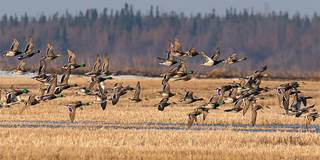
Photo Chris Benson
While our analysis reaffirmed the crucial importance of breeding habitats, migration and wintering habitats still play a vital role in sustaining healthy waterfowl populations. To complete their annual life cycles, some species use these habitats for as long as six to eight months out of the year. These important wetland landscapes can be found across North America and include essential wintering and migration habitats in Mexico, the Central Valley of California, the Mississippi Alluvial Valley, and the Atlantic Coast. In the future, DU will continue its work in these areas to ensure that waterfowl survival remains acceptably high.
From a business strategy viewpoint, we will also seek to leverage our funding as much as possible via working partnerships with state and federal agencies and private conservationists. Leveraging support from these key partners is particularly important with funding that is geographically restricted (for example, state funding that must be used in that particular state). This approach supports mission-critical conservation work on these important landscapes while reducing reliance on discretionary funds that are needed for conservation work in priority breeding habitats.
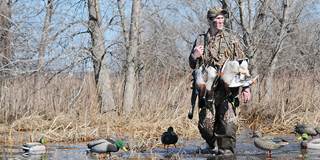
Photo Jim Thompson
The number of waterfowl hunters has declined by nearly 50 percent over the last several decades. If that disturbing trend continues, political support and funding for waterfowl conservation in North America will be at risk. Recent revisions and updates to NAWMP recognize this important challenge and its implications, and this has prompted a number of new efforts to recruit, retain, and reactivate waterfowlers.
Additionally, there is increasing interest in engaging other supporters of waterfowl and wetlands conservationpeople who respect hunting but support wetland conservation because of the important environmental benefits it provides. These benefits, often referred to as "ecosystem services," include improved water quality, flood mitigation, better soil health, and places for nature-based recreation. Collectively, these services have significant ecological, economic, and cultural value to people.
Since passage of the Migratory Bird Hunting and Conservation Stamp Act in 1934, waterfowl hunters have paid much of the costs of waterfowl management and habitat conservation. DU recognizes the crucial role waterfowl hunters play in sustaining future waterfowl populations, and we are working with partners to reverse declines in the number of waterfowl hunters. However, the decline in hunter numbers is also an enterprise risk, akin to a declining customer base. It's clear that the very large scale of needed habitat conservation cannot be achieved if funded solely by hunters.
DU's ICP takes a lead from the NAWMP revision by incorporating consideration of efforts to recruit, retain, and reactivate hunters and to appeal to other supporters who may bring additional funding and political support to the table. We need to expand our support base by engaging more people in conservation. Much of this effort will focus on developing and synthesizing the science that quantifies the whole spectrum of environmental benefits that our work provides. Consistent with efforts in the broader conservation community and NAWMP, our goal is to connect with people who value these benefits of our work and invite them to support us.
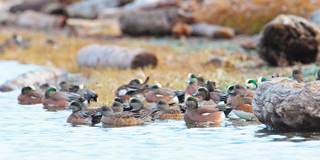
Photo GARYKRAMER.NET
Our International Conservation Plan is unique because it seeks to blend waterfowl and wetland science with business and social considerations. It also provides a foundation for DU to reach out to corporations, foundations, and other potential supporters. Ultimately, we believe our return-on-investment modeling has significant potential to inform conservation planning and improve results.
Dr. George Box (19192013), a highly respected British statistician, once said: "All models are wrong, but some are useful." DU's scientists know that our first-generation return-on-investment model can be improved, and we have already begun work to review, revise, and refine the model. As with most of what we do, we are taking an adaptive approach to planning, implementation, and evaluation, using what we learn to advance not only the next iteration of the model, but also most other elements of our business. Dr. Box was correctsome models are very useful indeed.
Ducks Unlimited uses cookies to enhance your browsing experience, optimize site functionality, analyze traffic, and deliver personalized advertising through third parties. By continuing to use this site, you agree to our use of cookies. View Privacy Policy